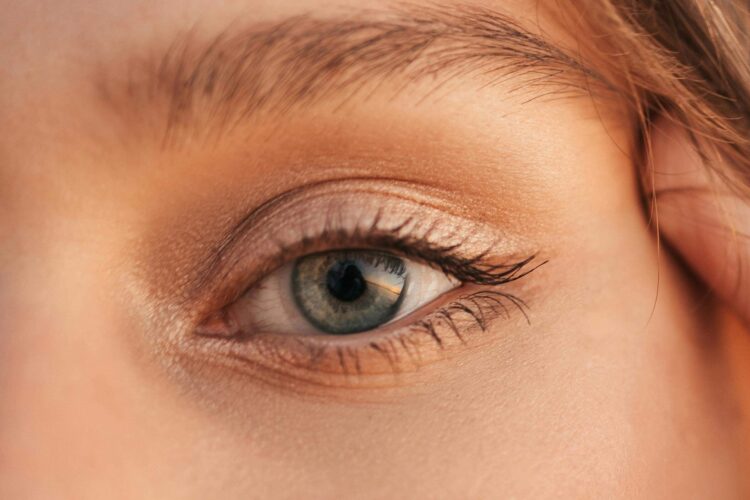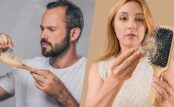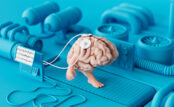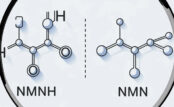The delicate skin around our eyes is often the first to show signs of aging. Those subtle changes—fine lines, dark circles, and puffiness—can significantly impact our appearance and how others perceive our age and vitality. This comprehensive guide explores the science behind under-eye aging, evidence-based treatments, and what you can do to maintain a youthful appearance around this expressive area of the face.
Why Does the Under Eye Area Age Faster?
The skin around our eyes is approximately 0.5mm thick—making it the thinnest skin on our entire body and roughly 40% thinner than the skin on the rest of the face. This delicate area has several unique characteristics that make it particularly vulnerable to aging:
Key Factors Behind Under Eye Aging
- Reduced Collagen and Elastin Production: As we age, our skin naturally produces less collagen and elastin, the proteins responsible for skin firmness and elasticity. This decline begins in our 20s and accelerates in our 40s and beyond.
- Decreased Fat Padding: The under-eye area has minimal fat padding compared to other facial regions. With age, what little cushioning exists can diminish or shift, creating hollows that cast shadows.
- Repetitive Movement: The average person blinks approximately 15-20 times per minute—that’s over 20,000 times daily! These repetitive movements gradually break down collagen and elastin fibers.
- Sun Exposure: UV damage accelerates collagen breakdown and causes hyperpigmentation. Many people neglect to apply sunscreen around their eyes, leading to premature aging in this area.
- Genetics: Family history plays a significant role in how your eye area ages, influencing everything from skin thickness to propensity for dark circles.
Common Under Eye Aging Concerns
Fine Lines and Wrinkles
Often called “crow’s feet,” these fine lines typically begin at the outer corners of the eyes and gradually extend outward. Research published in the Journal of Cosmetic Dermatology indicates that visible lines around the eyes can appear as early as the mid-20s due to the combination of thin skin and repeated muscle movements.
Dark Circles
Dark circles develop due to several factors:
- Thinning skin revealing blood vessels underneath
- Shadow-casting from volume loss and hollowing
- Hyperpigmentation from sun damage or inflammation
- Genetic predisposition to increased melanin production
A study in the International Journal of Dermatology found that 65% of adults report dark circles as their primary cosmetic concern regarding the eye area.
Under Eye Puffiness
Puffiness typically results from:
- Fluid retention (often worse in the morning)
- Weakening of orbital septum (the membrane holding back orbital fat)
- Inflammatory responses to allergies, diet, or lack of sleep
Evidence-Based Treatments for Under Eye Aging
Topical Ingredients with Clinical Support
Several ingredients have demonstrated efficacy for the under-eye area in controlled studies:
- Peptides: These amino acid chains signal the skin to produce more collagen. Specific peptides like palmitoyl pentapeptide-4 have shown a 33% reduction in wrinkle volume and 23% decrease in wrinkle depth in clinical trials.
- Retinoids: Derivatives of vitamin A increase cell turnover and collagen production. A 2007 study in Archives of Dermatology found that 0.05% retinaldehyde significantly improved under-eye wrinkles after 16 weeks.
- Vitamin C: This powerful antioxidant brightens skin and supports collagen synthesis. Research in the Journal of Cosmetic Dermatology demonstrated that stabilized vitamin C reduced dark circles by up to 19% after 8 weeks.
- Caffeine: Studies show caffeine constricts blood vessels and reduces fluid accumulation, making it effective for temporary reduction of puffiness.
- Hyaluronic Acid: This moisture-binding molecule can hold up to 1,000 times its weight in water, helping plump the skin and reduce the appearance of fine lines.
Professional Treatments
For more significant concerns, dermatologist-administered treatments include:
- Dermal Fillers: Hyaluronic acid fillers like Juvederm and Restylane can restore volume to hollow under-eyes. A study in Plastic and Reconstructive Surgery showed 95% patient satisfaction with hyaluronic acid treatment for tear troughs, with results lasting 6-12 months.
- Botulinum Toxin (Botox): By relaxing the orbicularis oculi muscle, Botox reduces crow’s feet. Clinical studies show improvements lasting 3-4 months.
- Laser Resurfacing: Fractional laser treatments stimulate collagen production and address texture, pigmentation, and fine lines. Research shows 50-75% improvement in skin texture after a series of treatments.
- Chemical Peels: Medium-depth peels containing glycolic or trichloroacetic acid can improve skin tone and texture around the eyes when administered by professionals.
- Platelet-Rich Plasma (PRP): This treatment uses your body’s own growth factors to stimulate collagen and elastin production. Initial studies show promising results for under-eye hollows and skin quality.
Lifestyle Factors That Impact Under Eye Aging
No discussion of eye aging would be complete without addressing lifestyle factors:
- Sun Protection: Daily broad-spectrum SPF is the most effective anti-aging strategy. Special eye-area formulations are available for sensitive skin.
- Sleep Quality: During deep sleep, your body produces growth hormone, which aids in cellular repair. Poor sleep quality is directly correlated with increased signs of aging.
- Hydration: Adequate water intake helps maintain skin elasticity and reduces the appearance of fine lines.
- Diet: Foods rich in antioxidants, omega-3 fatty acids, and vitamins C and E support skin health. A 2020 study in Nutrients linked higher consumption of fruits, vegetables, and fish with fewer visible signs of skin aging.
- Smoking Cessation: Smoking accelerates collagen breakdown and causes vasoconstriction, reducing blood flow to the skin.
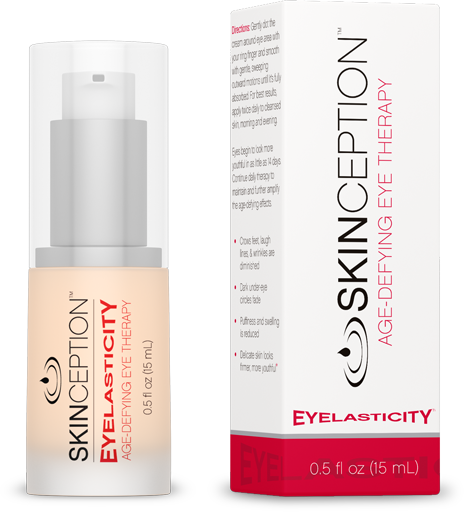
For those seeking a comprehensive topical solution to under-eye aging, Eyelasticity™ by Leading Edge Health offers a multi-faceted approach backed by clinical testing. This formulation incorporates several of the evidence-based ingredients discussed above:
Key Benefits:
- Reduces the appearance of crow’s feet and laugh lines
- Minimizes under-eye puffiness
- Diminishes dark circles
- Strengthens and thickens delicate skin around the eyes
- Shows visible improvement beginning at approximately 4 weeks
Clinical Results:
The formula has demonstrated impressive results in controlled studies:
- 90% of participants experienced reduction in under-eye puffiness
- 21% improvement in wrinkle depth
- 35% lightening of dark circles
Eyelasticity™ utilizes a proprietary blend of patented peptides that work to restore elasticity and firmness to the eye area. As part of the Skinception® line of skincare products, it has gained popularity for its visible anti-aging benefits that address multiple concerns simultaneously.
Conclusion
Under-eye aging is influenced by a complex interplay of intrinsic factors like genetics and natural aging processes, and extrinsic factors including sun exposure, lifestyle choices, and skincare habits. While we cannot stop the aging process entirely, understanding these mechanisms allows us to make informed choices about prevention and treatment.
Whether you opt for professional interventions, over-the-counter products like Eyelasticity™, or simply commit to better lifestyle habits, addressing the unique needs of the delicate eye area can significantly impact how you age and how others perceive your vitality and youthfulness.
By combining evidence-based ingredients, protective measures, and consistent care, you can effectively manage the visible signs of aging around your eyes and maintain a refreshed, vibrant appearance at any age.

